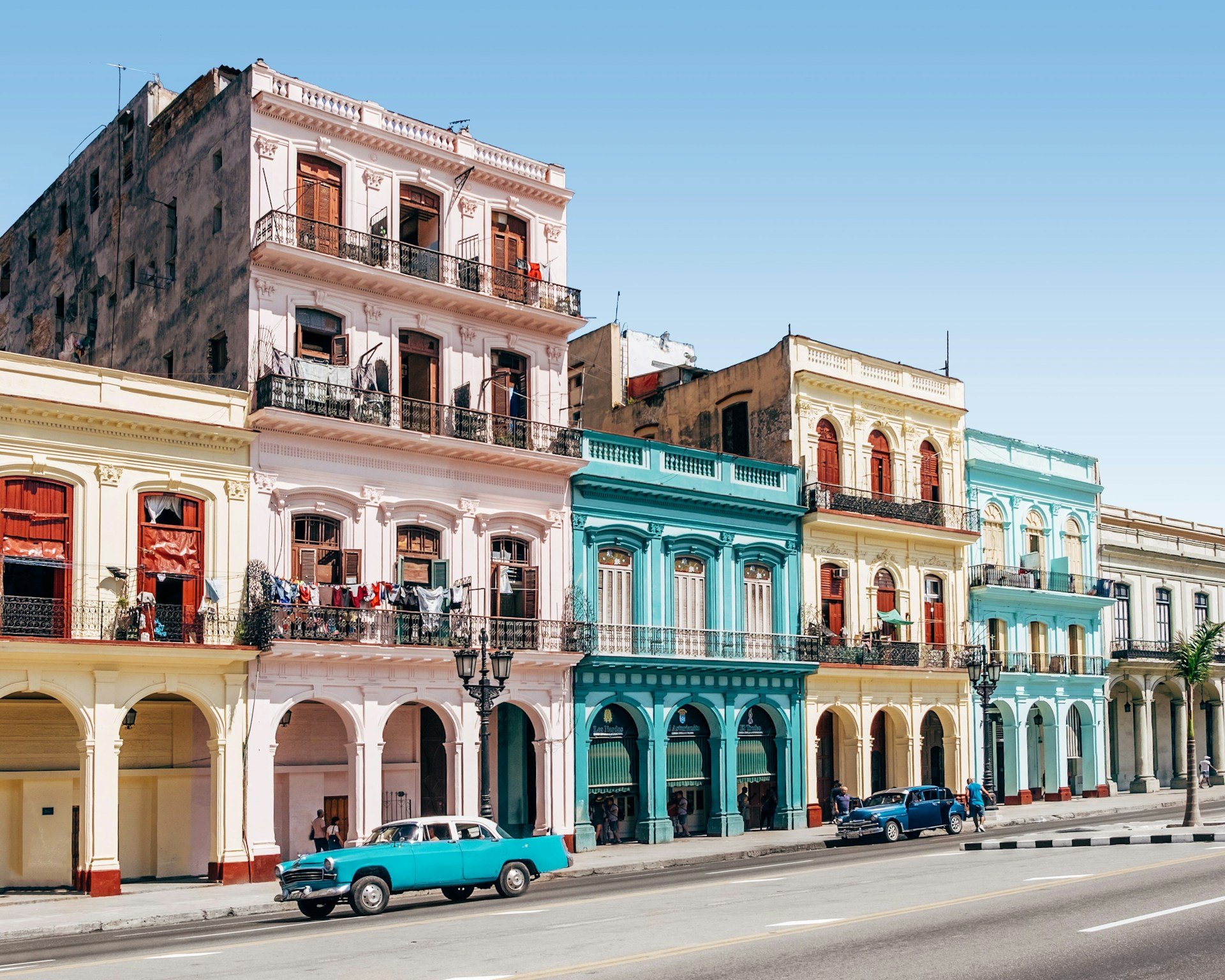
Cuba is a land brimming with contradictions, where every town provides a distinctive glimpse into its culture, past, and scenery—a captivating nation indeed. Whether you're immersed in the vibrant ambiance of Havana or charmed by quaint hamlets, Cuba entices visitors with its variety and genuineness. Below is a summary of the loveliest urban areas worth exploring during your Cuban journey.
Interested in visiting Cuba? Learn more about it to get ready for your journey:
- The loveliest shores to experience when visiting Cuba
- Cuban Family Vacations: 6 Activities That Will Delight Children
- The top Cuban keys for a heavenly retreat
Havana: The lively, evocative heart of the city
Havana, which is the capital city of Cuba is a distinctive city where past and present merge to provide an extraordinary encounter. The narrow cobblestone lanes, vibrantly painted colonial structures, and vintage 1950s American automobiles contribute to a nostalgic ambiance that captivates all who visit.
The historical core of Old Havana, recognized as a UNESCO World Heritage site, houses renowned landmarks like the Capitol Building, the Museum of the Revolution, and the stunning Plaza de la Catedral. Beyond these architectural gems, Havana serves as Cuba’s vibrant cultural hub featuring bustling salsa venues, live musical performances, and an abundance of art galleries. Taking a walk along the famed Malecón—a popular coastal esplanade—is essential for appreciating the evening sunsets while soaking up the city’s inviting ambiance.
Trinidad: the gem of Cuba
Situated in the southern part of the island, Trinidad stands out as one of the most well-maintained colonial-era cities in Latin America. Established during the 16th century, this vibrant town boasts distinctive architectural styles and rich historical significance, making it truly distinct. Walking along Trinidad’s stone-paved lanes feels akin to traveling back centuries into the past.
Houses with pastel-colored facades, courtyards filled with tropical flora, and charming churches come together to form a captivating scene. At the center of this ambiance lies the Plaza Mayor, encircled by exquisitely refurbished colonial homes, making it the very essence of the town and an ideal spot for leisurely strolls.
Viñales: A Village Enveloped by Nature
If exploring Cuba’s natural splendor is your aim, Viñales should definitely be on your list. Nestled within a lush valley in the western part of the country, Viñales National Park is famous for its breathtaking landscapes, featuring its iconic motifs such as limestone karsts rising amidst tobacco fields and coffee plantations.
The town of Viñales exudes charm with its quaint little homes topped with crimson roofs and its serene ambiance. As a launchpad for discovering the nearby region, this locale provides perfect opportunities for hikes, bicycle rides, or leisurely horse treks. Tours through tobacco farms uncover the craftsmanship involved in producing Cuba’s renowned cigars. Additionally, the subterranean wonders of Cueva del Indio and Santo Tomás promise captivating explorations beneath the earth.
Cienfuegos: Cuba’s “French” city
Referred to as the "Pearl of the South," Cienfuegos is a coastal city located along the southern shore of the island. Established during the 19th century by French colonists, this urban center boasts an impressive array of neoclassical structures, expansive boulevards, and a laid-back ambiance. At its heart lies Parque José Martí, which serves as the main plaza encircled by notable edifices like the Teatro Tomás Terry and the Catedral de la Purísima Concepción—testaments to the area’s strong ties with France.
The Palacio de Valle, with its eclectic Moorish-inspired design, stands as another must-see architectural treasure. While the city boasts a more serene ambiance compared to Havana, it still exudes a distinctive urban allure.
Baracoa: Cuba’s oldest city
Situated at the easternmost part of the island, Baracoa is frequently called Cuba’s most ancient settlement, established as the nation’s initial capital when it was founded in 1511 by Diego Velázquez. Although it remained secluded for many years, this quaint town has become an attractive spot today due to its genuine ambiance and untamed scenery.
In the center of Baracoa stands Plaza Independencia, encircled by unpretentious yet delightful colonial structures. The Catedral de Nuestra Señora de la Asunción houses the Cruz de la Parra, an artifact believed to have been brought by Christopher Columbus upon his arrival on the island.


No comments:
Post a Comment